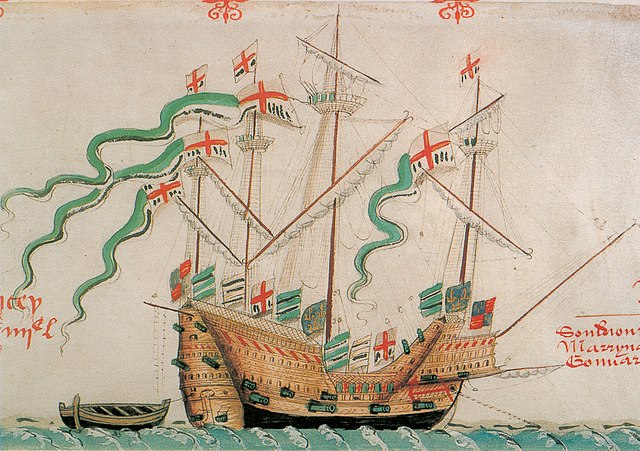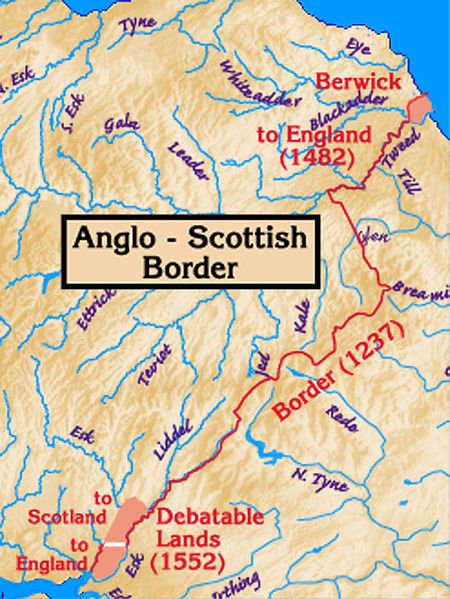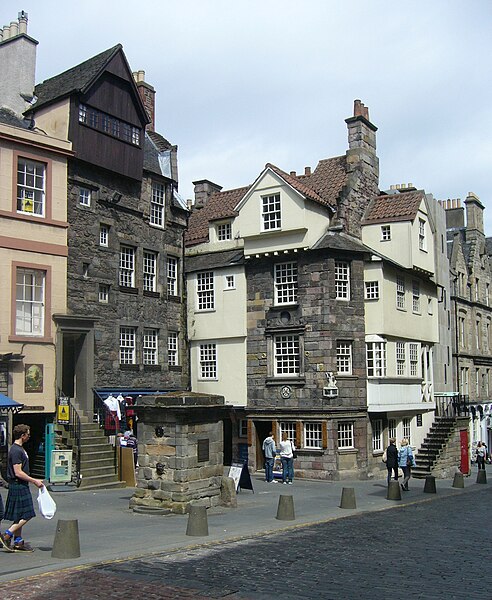The Burning of Edinburgh in 1544 by an English army was the first major action of the war of the Rough Wooing. The Provost of Edinburgh was compelled to allow the English to sack Leith and Edinburgh, and the city was burnt on 7 May. However, the Scottish artillery within Edinburgh Castle harassed the English forces, who had neither the time nor the resources to besiege the Castle. The English fleet sailed away loaded with captured goods, and with two ships that had belonged to James V of Scotland.
Henry VIII
Hertford
The carrack Pauncy from the Anthony Roll
St Ninian's Chapel at the Bridgend was burnt in May 1544. The attached manse still stands.
The Rough Wooing, also known as the Eight Years' War, was part of the Anglo-Scottish Wars of the 16th century. Following its break with the Catholic Church, England attacked Scotland, partly to break the Auld Alliance and prevent Scotland being used as a springboard for future invasion by France, partly to weaken Scotland, and partly to force the Scottish Parliament to confirm the existing marriage alliance between Mary, Queen of Scots, and the English heir apparent Edward, son of King Henry VIII, under the terms of the Treaty of Greenwich of July 1543. An invasion of France was also contemplated.
Anglo-Scottish border at the time of the Rough Wooing
Surviving buildings in the Old Town of Edinburgh
Sir John Luttrell, English commander at Inchcolm and Broughty Castle
Facsimile of a contemporary sketch showing the deployment of Hertford's forces before they burnt Edinburgh in May 1544








